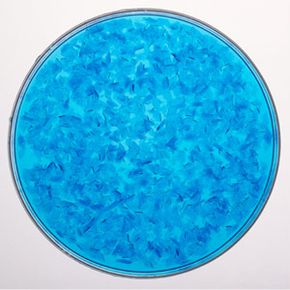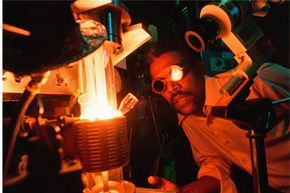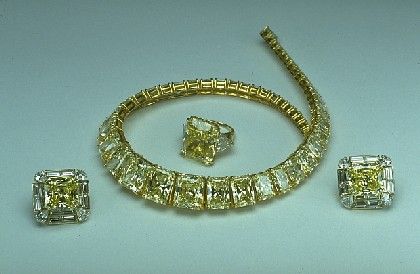From the Hope diamond to the shiny bits in Folgers coffee, crystals have always held the power to fascinate, inspiring soothsayers and adorning the crowns of emperors throughout history. But crystals aren't just a bunch of pretty facets -- they glimmer with useful properties. They lend strength to worked metals, run our timepieces and drive the digital displays and fluorescent bulbs of modern life.
Oh, and they season our food and cool our beverages as well.
Advertisement
Yes, salt, sugar and ice are crystals, too, just like the gems, metals, fluorescent paints and liquid crystals we mentioned. That's part of their charm; crystals can be made from just about anything. In fact, most minerals naturally occur in a crystalline form [source: Smithsonian].
A clue to this ubiquity can be found in our everyday speech. When we say someone's thoughts suddenly "crystallize" around a solution, we're all crystal clear on what that means: that a jumble of swirling possibilities resolved itself into something still and orderly. Consciously or not, we understand that the essential quality of a crystal is order -- specifically, a regular, periodic arrangement of atoms [source: UCSB].
Crystals can grow in a countertop pie tin, a high-tech lab or a fissure deep in the Earth. The recipe is deceptively simple: Take a cloud of gas, a pool of solution or a glop of melted rock, overstuff it with the right mineral or compound, then bake in a pressure cooker at somewhere between room temperature and the heat of molten lava. But executing that recipe can require the artistry of a chef and the meticulous control of a master baker -- or, in the case of natural crystals, dumb luck and an awful lot of time [sources: Hunting; Shea; Smithsonian].
All else being equal, longer growth times produce bigger crystals with fewer contaminants [sources: CU Boulder; UCSB]. Not that you always want to lose the impurities: After all, it's intruders like chromium, iron and titanium -- along with aspects of atomic arrangement -- that give gems their characteristic colors [sources: Encyclopaedia Britannica; Kay; Smithsonian].
Of course, crystals, like anything else, need room to grow. Trap them in cramped quarters and they stay small; jam several crystalline minerals into a small space like Japanese subway commuters, and you end up with crystal conglomerates. Granite, the favored rock of tombstones and countertops everywhere, is a conglomeration of quartz, feldspar and mica crystals, which grow as magma cools in cramped volcanic fissures [source: Smithsonian].
So there you have it: how to grow a crystal.
Now ... what was a crystal again, exactly?
Advertisement






